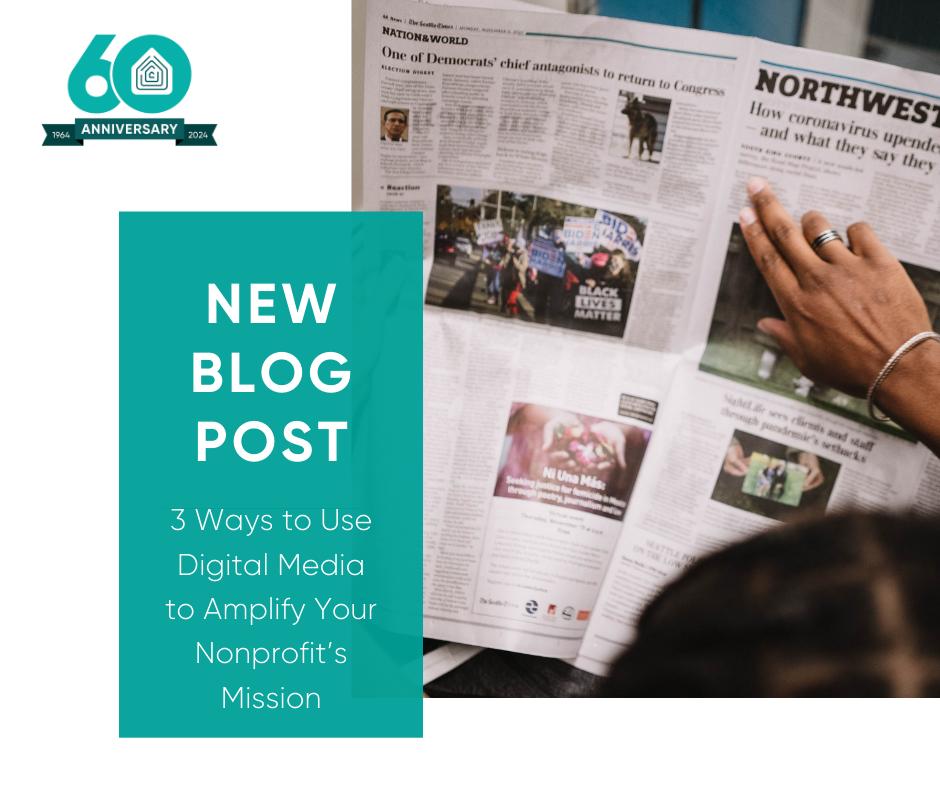There are a lot of things that have improved since the 1960s – technology, cars, fashion, and Caritas of Austin.
Continuing to operate and help thousands of Austinites through six decades is no small feat, especially since roughly 30% of nonprofits fail within 10 years of operations, according to the National Center on Charitable Statistics.
We sat down with Caritas of Austin’s President and Chief Executive Officer, Jo Kathryn Quinn, to learn what factors have contributed to the nonprofit’s longevity and success.
Here are five invaluable lessons from a 60-year-old nonprofit.
1. Protect your mission.
“Nonprofits have to actively shield their mission from any hints of mission creep to achieve lasting social impact,” Quinn said.
Mission creep: when nonprofits decide to run programs, activities or accept funding that is unrelated to its mission. It’s like a subtle ocean undercurrent; it can shift, pull, or budge nonprofits away from their mission and affect their ability to fulfill their original goals.
“It’s critical for nonprofit organizations to have a clear mission,” Quinn added. “They should only seek funding opportunities or make organizational changes that align with their mission and values.”
2. Be unafraid to innovate.
Mission creep shouldn’t be confused with strategic, innovative planning.
One of the largest factors in Caritas of Austin’s success is the organization’s ability to evolve and meet the community’s ever-changing needs, Quinn continued.
For example, just ten years after the organization’s founding, the city of Austin experienced an immigration influx from Southeast Asia and Cuba. In response to the needs of our new community members, Caritas of Austin developed a special refugee program to house and serve those experiencing international homelessness.
That one innovation created 50 years of impact.
We have served thousands of refugees since 1974 and continue to serve our new neighbors today with employment, financial, food, and medical assistance.
3. Diversify your funding.
Quinn added that innovating in line with your mission is only possible if you’ve diversified your funding.
“Being overly reliant on a single or handful of funding streams impedes the organization from taking bold action,” Quinn said.
However, a mixed funding portfolio between public and private sources gives your organization the flexibility to grow confidently to meet the needs of your community.
4. Be collaborative.
Collaboration is key in accomplishing your mission and community-wide change.
“No organization can or should be the be-all-end-all,” Quinn said. “We need one another, and we bring our specialties to the general work we do, and we strengthen each other by doing the work together.”
Quinn reflects on the example of the Best Single Source collaborative. In 2005, organizations focused on basic needs and poverty saw a gap in their services and banded together to fill that need in the community.
The organization called themselves Best Single Source and proposed a contract to pool their individual contracts with the city and county into one contract distributed between the organizations. With this shared pool of funding, they maximized the impact on the people they served. By consensus, the new collaboration chose Caritas of Austin to be their lead and fiscal agent.
In 2009, Best Single Source became Best Single Source Plus (BSS+) and added a short-term housing component. With this collaborative innovation, the organization grew to not only prevent homelessness but also make homelessness brief for families who recently became unhoused.
“When organizations collaborate, the work is exponentially more effective,” she concluded.
5. Pair professionalism with lived experience.
A nonprofit’s impact is reliant on its staff.
Prioritizing a culture of professional development and continued learning promotes not only employee retention and self-care in an industry where that’s essential, but also elevates the quality of service employees can offer to clients.
“It’s all related to our value of excellence,” Quinn said. “If you want to be at your best, to feel your best or serve your best, it requires constant learning. At no point do any of us know everything we need to know. I’ve been in the nonprofit sector for 39 years, and I’m still learning.”
For those in the homelessness profession, pairing professionalism with lived experience through adding Peer Support Specialists makes a significant difference in quality, Quinn said.
Peer support is an evidence-based model of care where qualified peers provide an added layer of support to clients, and Peer Support Specialists’ lived experience provides an important opportunity for connection.
Caritas of Austin added Peer Support Specialists to our staff five years ago.
“Peer Support Specialists are now an indispensable part of our work,” she said. “People who have had lived experience gives staff a perspective we didn’t have before, and also forms a bridge that creates trust between our clients and our organization. They see someone who has experienced homelessness, trauma or mental health issues and it’s easier to relate to and trust them.”
Sixty years in any business is a considerable achievement, but it’s made even more exceptional when considering the impact on the lives of thousands of our community members and families.
Thank you for partnering with us as we make homelessness rare, brief, and nonrecurring in Austin!



